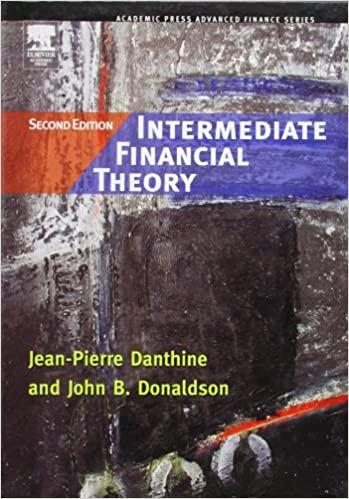You would like to set up a portfolio with the payoff structure at time T depicted in the figure below. The underlying stock is a non-dividend paying stock, and its current stock price is $23. The prevailing continuous compound risk-free rate is 5% per annum, and T = 1 year.
Suppose that except the shares of the underlying stock and the risk-free bonds, there are alsosix call options with strike prices X = $20, $21, ..., $25 (all integer values from $20 to $25),and five put options with strike prices X = $26, $27, ..., $30 (all integer values from $26 to $30) available in the market. All the option contracts are European style options which mature at time T and are written on the same underlying stock. Assume the time value of options are non-negative, and any of the securities can be bought or (short) sold.
a). Clarify how you would set up the portfolio today to ensure the payoff structure at time T in the above figure, assuming that put-call parity holds for the options.
b). Suppose that the cost for setting up the portfolio in Part a) is $6.80. The negative cost indicates that you receive, rather than pay out, $6.80 when forming the portfolio. Explain why the payoff structure could limit the downside risk at time T, and calculate the maximum (possible) loss of the portfolio at time T.

Question 6 (9 marks) You would like to set up a portfolio with the payoff structure at time T depicted in the figure below. The underlying stock is a non-dividend paying stock, and its current stock price is $23. The prevailing continuous compound risk-free rate is 5% per annum, and T = 1 year. Figure: Payoff Structure (in $) 20 30 40 10 1 0 ST -10 Payoff Suppose that except the shares of the underlying stock and the risk-free bonds, there are also six call options with strike prices X = $20, $21, ..., $25 (all integer values from $20 to $25), and five put options with strike prices X = $26, $27, ..., $30 (all integer values from $26 to $30) available in the market. All the option contracts are European style options which mature at time T and are written on the same underlying stock. Assume the time value of options are non-negative, and any of the securities can be bought or (short) sold. a). Clarify how you would set up the portfolio today to ensure the payoff structure at time T in the above figure, assuming that put-call parity holds for the options. (3 marks) b). Suppose that the cost for setting up the portfolio in Part a) is $6.80. The negative cost indicates that you receive, rather than pay out, $6.80 when forming the portfolio. Explain why the payoff structure could limit the downside risk at time T, and calculate the maximum (possible) loss of the portfolio at time T. (2 marks) Question 6 (9 marks) You would like to set up a portfolio with the payoff structure at time T depicted in the figure below. The underlying stock is a non-dividend paying stock, and its current stock price is $23. The prevailing continuous compound risk-free rate is 5% per annum, and T = 1 year. Figure: Payoff Structure (in $) 20 30 40 10 1 0 ST -10 Payoff Suppose that except the shares of the underlying stock and the risk-free bonds, there are also six call options with strike prices X = $20, $21, ..., $25 (all integer values from $20 to $25), and five put options with strike prices X = $26, $27, ..., $30 (all integer values from $26 to $30) available in the market. All the option contracts are European style options which mature at time T and are written on the same underlying stock. Assume the time value of options are non-negative, and any of the securities can be bought or (short) sold. a). Clarify how you would set up the portfolio today to ensure the payoff structure at time T in the above figure, assuming that put-call parity holds for the options. (3 marks) b). Suppose that the cost for setting up the portfolio in Part a) is $6.80. The negative cost indicates that you receive, rather than pay out, $6.80 when forming the portfolio. Explain why the payoff structure could limit the downside risk at time T, and calculate the maximum (possible) loss of the portfolio at time T. (2 marks)







